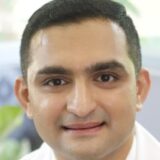
By P.T. Bopanna
Being one of the most highly-educated communities in India, Kodavas (Coorgs) should develop a rational outlook towards their religious faith, instead of believing in unscientific religious dogmas borrowed from Hinduism.
The Kodavas are an ethno-linguistic group who inhabit the Kodagu (Coorg) district of Karnataka in the hilly region of the Western Ghats. They are an indigenous land-owning community with tribal and martial traditions, originally a community of hunters and warriors.
Their core religious belief is nature and ancestor worship. Kodava traditions and cultural practices, known as Kodavaame or the Kodava way of life, were transmitted orally from generation to generation. These were not frozen in time, but have evolved with some changes and continue to be practiced by the members of the community to this day.
RATIONALISM
As a born Kodava, I feel that the Kodava belief in ancestor and nature worship is nearer to rationalism than the beliefs of mainstream Brahminical Hinduism.
Being a rationalist myself, I have always admired physicist Stephen Hawking. The same goes for Bertrand Russell, Charles Darwin, Karl Marx, and our very own E.V. Ramaswamy Naickar, popularly known as Periyar, the leader of the Dravidian movement. All these geniuses advocated scientific reasoning, instead of blind belief in dogmas.
We should be thankful to our first Prime Minister Jawaharlal Nehru for advocating a scientific temper, even though he may have failed on several fronts.
Under the circumstances, the Kodava community should imbibe rationalism in their approach to religious practices. Even Article 51 (A) of the Indian Constitution, which deals with fundamental duties, makes it a duty of every citizen to develop scientific temper.
Kodavaame is a precious heritage handed down to us by our ancestors. It should be practiced and preserved for generations to come.
DISTORTIONS
I wish to first explain the original religious practices of Kodavas, and also note how distortions occurred in their observance over a period of time.
After Kodagu came under the rule of Lingayat Rajas around 1600 AD, distortions occurred in Kodava religious practices. The Haleri kings built Hindu temples in Kodagu and appointed Kodavas as deva thakkas (temple headmen) to administer the temples. Brahmin priests were brought from outside Kodagu to perform the Hindu rituals.
Prior to the advent of Hindu temples, Kodavas worshipped the Karanava, the first ancestor of the okka (clan) as their god. Every ainmane or joint family house of the clan, had a kaimada or ancestral shrine to worship the ancestors. The ritual offerings to the ancestors included animals and alcohol.
The routine prayer ritual in Kodava households consists of lighting the sacred lamp kept in the nellakki nadu bade (central hall in the ancestral home). The sacred space around the lamp is empty as Kodavas do not worship idols. The lamp is lit both at dawn and dusk, to invoke the blessings of the ancestors. The Kodavas also worship river Cauvery, as water, but not as an image. Most important decisions are solemnized in front of the lamp, after invoking the blessings of the ancestors and goddess Cauvery.
The early Kodavas also worshipped Ayyappa, god of the hunt, in forest shrines. In addition, they worshipped spirit-deities and village deities such as Bhagavathi, Sarthavu and Bhadrakali. Igguthappa, the god of rain and crops, was also worshipped. Though the legend of Igguthappa was essentially imported from Kerala during the reign of Kodagu Rajas, the god of rain has become an important deity in the Kodava pantheon.
Being nature worshippers, Kodavas offer worship at the devakad (sacred groves), forests located in every village, dedicated to village deities, where hunting and felling of trees is prohibited.
It should be noted that none of the Kodava festivals like Kailpod and Puthari are based on any god. They are connected to the agriculture seasons. The holy festival of Kaveri Sankramana, which many have noted is a more recently introduced festival, revolves around river Cauvery.
KAVERI PURANA
The mythological story woven by the Brahminical priests that Agastya’s wife Cauvery turned into a river to serve mankind, impinges on Kodava belief in nature worship. The Cauvery river is a natural geographical phenomenon. Any effort to give a mythological twist to the origin of the river is untenable. Kodavas should not go by such irrational beliefs.
Being nature worshippers, it has been customary for Kodavas to collect water from Talacauvery and use it for rituals.
Similarly it is irrational on the part of Kodavas to believe in the concept of an annual Theerthobhava at the Talacauvery kundike (pond) at a particular point in time, as this goes against the theories of science. According to Hindu mythology, water gushes out of the pond from where the river Cauvery takes its birth, precisely on the date and at the time predicted by the priests.
Maj Gen Codanda K Karumbaya, SM (Retd), in his article in the book ‘Are Kodavas (Coorgs) Hindus?’ notes: “Kodavas must believe in truth and not continue to be fooled. The so-called ‘Theerthodbhava’ (annual re-birth of the river), cannot be true, as any geologist with basic knowledge can testify. It is ridiculous to claim that the river’s water erupts once a year at the Kundike, the pond from where the river Cauvery takes birth, precisely on the date and at the time predicted by Hindu priests.”
“During the month of October in Kodagu, it is usual for bubbles to pop up in water bodies like the Kundike due to the release of air pockets in the underground vents through which the spring water emerges. Such phenomena are seen in many parts of the world. That some Kodavas still believe in Theerthodbhava, sadly exposes our submissive acceptance of what the Hindu priests tell us and our lack of scientific temper. We should worship Cauvery water in its natural form and not in a human form, that too in an alien dress. We need to restore our faith in what is true rather than placing our trust in mythological stories, written with ulterior motives.”
REBIRTH
Nowadays many Kodavas have started to believe in the Hindu concept of rebirth, whereas Kodavaame does not believe in the other world.
While Brahmanic Hindu philosophy is very concerned about rebirth and philosophises the aftermath of death in a major way, the concept of heaven and hell being a small part in it, Kodavas are more concerned with living well in the present, rather than ‘the other world.’
Dr Sowmya Dechamma, head of Comparative Literature, University of Hyderabad, who has done extensive research on the Kodava songs of the dead, says: “These songs for the dead of the Kodavas not only do not mention ‘the other worldly’ things, but instead mention what matters in the lifetime, the materiality of living and living well, the problems, pleasures, ‘small traditions’, ‘small’ resistances, ‘small’ heroics and ‘smaller’ histories.”
The Kodava belief is in consonance with the belief of British scientist Stephen Hawking, emphasizing on the need to fulfil human potential on earth, rather than think of re-birth.
Hawking says: The belief that heaven or an afterlife awaits us is a “fairy story” for people afraid of death.
The scientist rejected the notion of life beyond death and emphasised the need to fulfil our potential on earth by making good use of our lives. In answer to a question on how we should live, he said, simply: “We should seek the greatest value of our action.”
HOROSCOPE MATCHING
Although horoscope matching for arranging matrimonial alliances was almost non-existent among Kodavas a few decades ago, it has now become the main talking point during negotiations. It is very unfortunate that a highly-educated community has borrowed a regressive practice of the mainstream religion.
In an interesting article on the issue, Subbaiah Kadyamada Ganapathi, a film-maker wrote: “A community, so eager to call itself progressive, opted for the most regressive practice of a mainstream religion. We could have rather embraced other virtues, but we didn’t. We chose, allowed, and nurtured the fear that astrology has to offer and by constantly repeating the lie, we have made it our very truth. We thought it would make our life better, but I am sorry to say, it’s completely taking the sheen away.”
Kodava religion is now at the crossroads. Though Kodavas took up formal education only after the advent of British rule in Kodagu, our forefathers realised the importance of education and prevailed upon the British administration to start schools. The education imparted in these schools, helped the community to occupy important posts both in the government and Army, even before India’s Independence.
The gains made by our forefathers by embracing education in a big way, should not be squandered by imitating the regressive religious practices of the mainstream religion. Kodavas should appreciate their original faith which respects elders and nature. The unique culture of the Kodavas adds to the diversity and richness of global culture.
*The proposed book to be edited by me, will be a sequel to my earlier book Are Kodavas (Coorgs) Hindus?
*Photograph of Talacauvery temple in its pristine form. In recent years, government agencies concretised the temple area. Now the area resembles a tourist spot, rather than that of a pilgrimage centre.






















